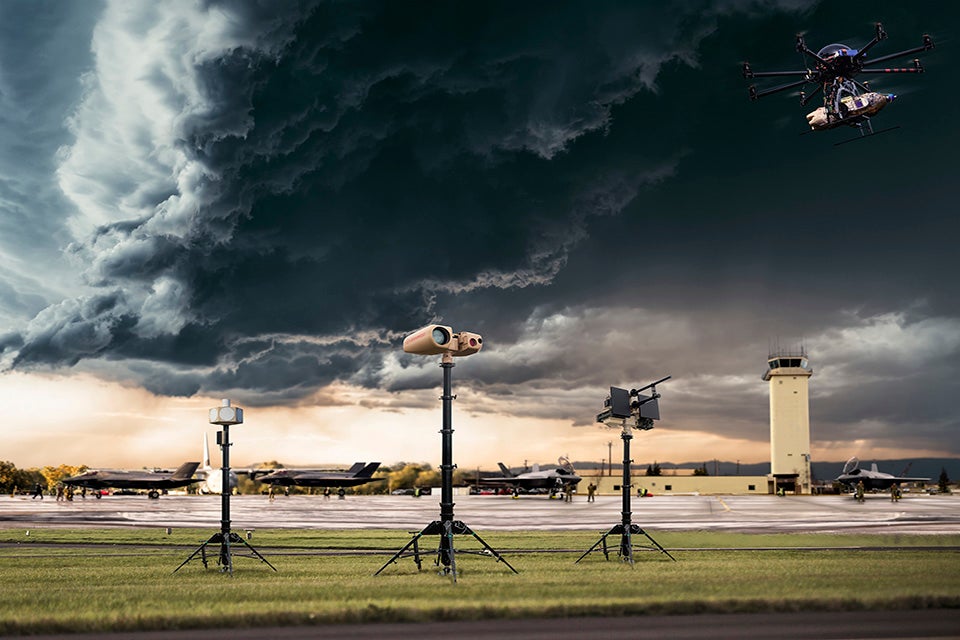
The UK Royal Air Force’s (RAF) ORCUS counter unmanned aerial system (C-UAS) capability has achieved initial operating capability (IOC) following a series of successful tests.
Orcus’ IOC was announced yesterday by defence minister Jeremy Quinn at the Defence Procurement, Research, Technology & Exportability (DPRTE) 2020 event.
The ORCUS system is designed to jam radio signals from UAS and has been successfully deployed during drone sightings at civilian airports.
Commenting on the development at DPRTE Quinn said: “It is vital that our armed forces are equipped with the latest technology to counter emerging threats from our adversaries.
“Today we announce the investment in the latest in radar technology for our fighter jets and pioneering new defence systems to counter threats from drones. This demonstrates our commitment to maintaining security in the air whilst supporting highly-skilled jobs across the UK.”
ORCUS was developed as part of the RAF’s SYNERGIA counter-drone research and development programme in partnership with Leonardo.
In a press release, the Ministry of Defence (MOD) said: “Vital to protecting UK airbases from hostile drone activity, ORCUS will enable the RAF to evaluate a range of capabilities including advanced radar, electro-optic and radio frequency sensors, plus an electronic attack countermeasure.
“The device looks similar to a camera module placed on top of a tripod, allowing for unparalleled versatility in operations.”
Unlike some counter-drone systems, ORCUS relies on an electronic-attack countermeasure to intercept hostile drones rather than a kinetic interceptor.
Aspects of Leonardo’s C-UAS technology have in the past been used following UAS sightings at airports including Gatwick and Heathrow.
In its press release, Leonardo said: “The threat posed by rogue drones is being taken extremely seriously by the Ministry of Defence and therefore the C-UAS study programme, managed by Defence Equipment & Support (DE&S) Future Capability Group, is considered highly important to the security of the nation.
“Leonardo is working hard to ensure that the programme continues to be delivered, despite the disruption caused by the global coronavirus pandemic.”



